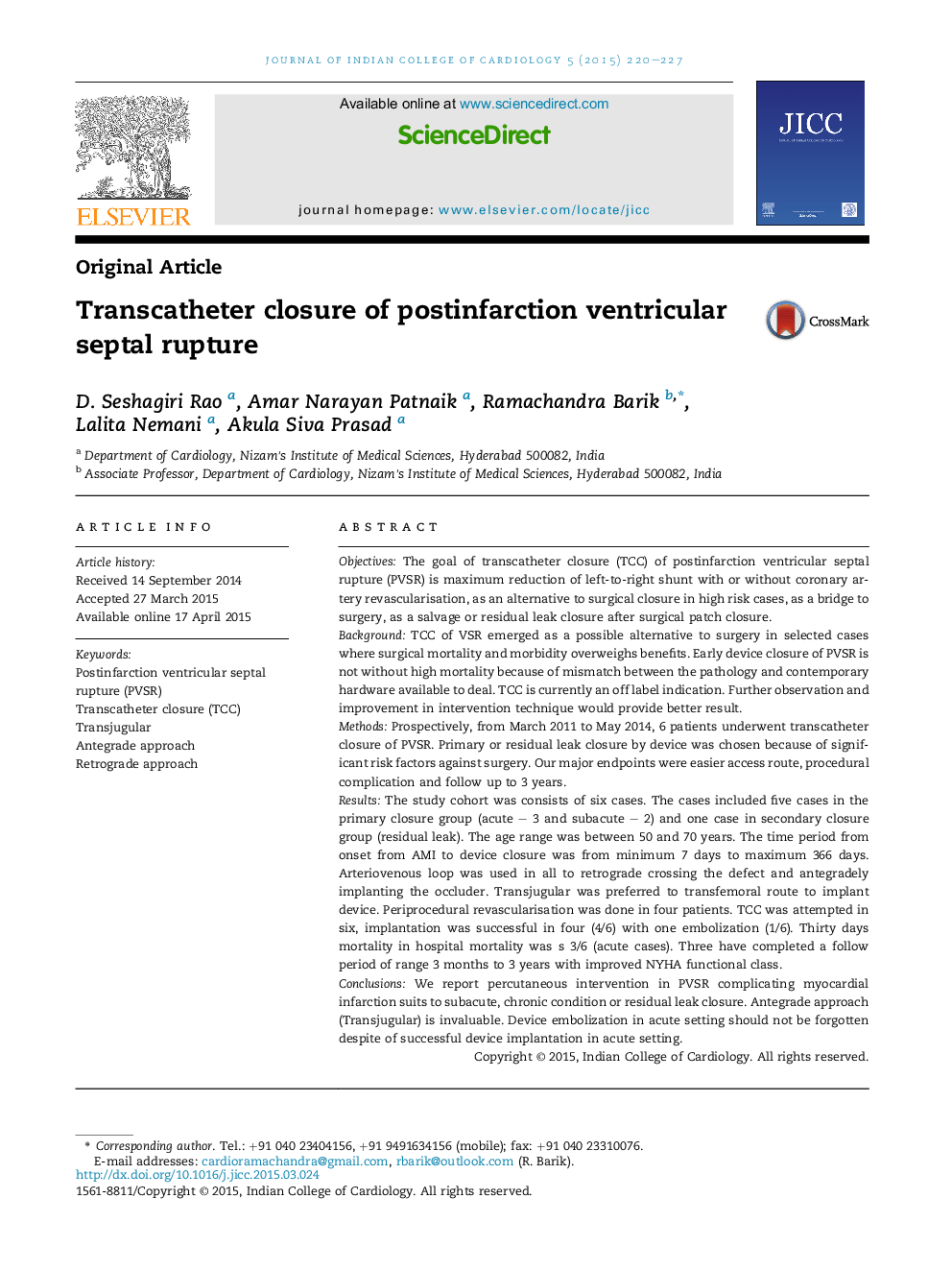| Article ID | Journal | Published Year | Pages | File Type |
|---|---|---|---|---|
| 2973863 | Journal of Indian College of Cardiology | 2015 | 8 Pages |
ObjectivesThe goal of transcatheter closure (TCC) of postinfarction ventricular septal rupture (PVSR) is maximum reduction of left-to-right shunt with or without coronary artery revascularisation, as an alternative to surgical closure in high risk cases, as a bridge to surgery, as a salvage or residual leak closure after surgical patch closure.BackgroundTCC of VSR emerged as a possible alternative to surgery in selected cases where surgical mortality and morbidity overweighs benefits. Early device closure of PVSR is not without high mortality because of mismatch between the pathology and contemporary hardware available to deal. TCC is currently an off label indication. Further observation and improvement in intervention technique would provide better result.MethodsProspectively, from March 2011 to May 2014, 6 patients underwent transcatheter closure of PVSR. Primary or residual leak closure by device was chosen because of significant risk factors against surgery. Our major endpoints were easier access route, procedural complication and follow up to 3 years.ResultsThe study cohort was consists of six cases. The cases included five cases in the primary closure group (acute – 3 and subacute – 2) and one case in secondary closure group (residual leak). The age range was between 50 and 70 years. The time period from onset from AMI to device closure was from minimum 7 days to maximum 366 days. Arteriovenous loop was used in all to retrograde crossing the defect and antegradely implanting the occluder. Transjugular was preferred to transfemoral route to implant device. Periprocedural revascularisation was done in four patients. TCC was attempted in six, implantation was successful in four (4/6) with one embolization (1/6). Thirty days mortality in hospital mortality was s 3/6 (acute cases). Three have completed a follow period of range 3 months to 3 years with improved NYHA functional class.ConclusionsWe report percutaneous intervention in PVSR complicating myocardial infarction suits to subacute, chronic condition or residual leak closure. Antegrade approach (Transjugular) is invaluable. Device embolization in acute setting should not be forgotten despite of successful device implantation in acute setting.
